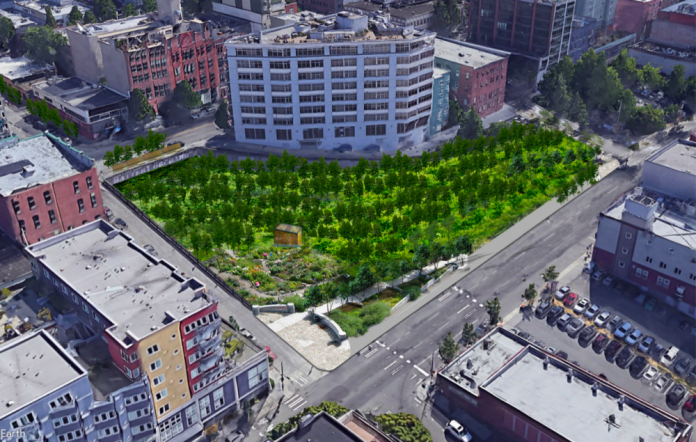
It’s official, Belltown is getting a new park at the Battery Portal Site as part of the Waterfront Seattle project. At about three acres, the future Battery Portal Park will bring much needed green space into one of the Seattle’s densest residential neighborhoods. The park also represents a victory for Recharge the Battery, a community driven initiative advocating for improvements along the Battery Street Corridor.

Aaron Asis, a founding member of Recharge the Battery, said the design of the future Battery Portal Park will be completed in conjunction with the Bell Street Park Extension, offering opportunity for two projects to tie into each other. During the coming year, the City of Seattle and landscape architecture firm GGN will work with Recharge the Battery to hold public events that encourage community engagement with the design planning process. Additionally, a citizen advisory committee made up of delegates who represent different Belltown neighborhood interests will also be convened.
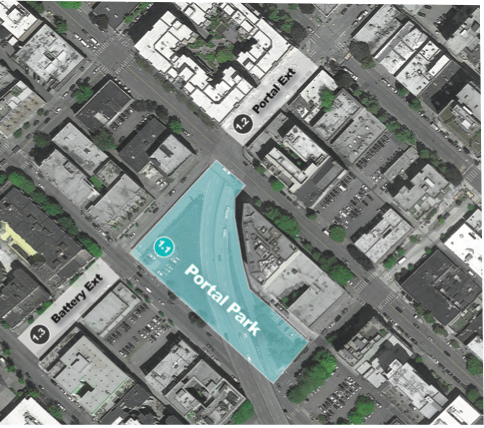
For Asis, relationship and trust building among Belltown neighbors will be key to successful a community engagement process. “The part that is important to us is to not intimate the public,” Asis said. “Our goal is to dig a little deeper and continue to get to know people in the neighborhood.”
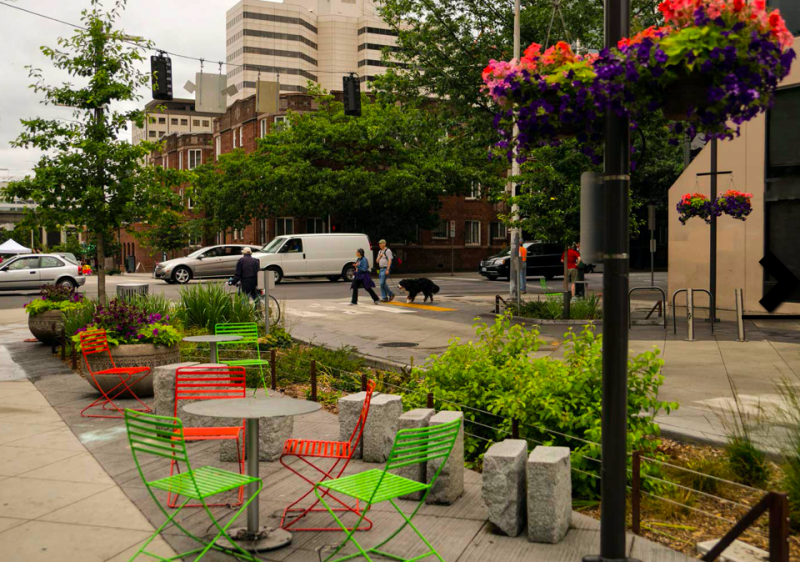
A bold vision for a greener Belltown
Recharge the Battery first attracted the Seattle’s attention with their plans to convert the Battery Street Tunnel into a subterranean open space. When the high cost of preserving the tunnel proved an insurmountable barrier for attracting the political support necessary to move the project forward, the campaign restyled itself as Recharge the Battery 2.0, with the Battery Portal Park topping the campaign’s wishlist for improvements within and near the Battery Street Corridor.
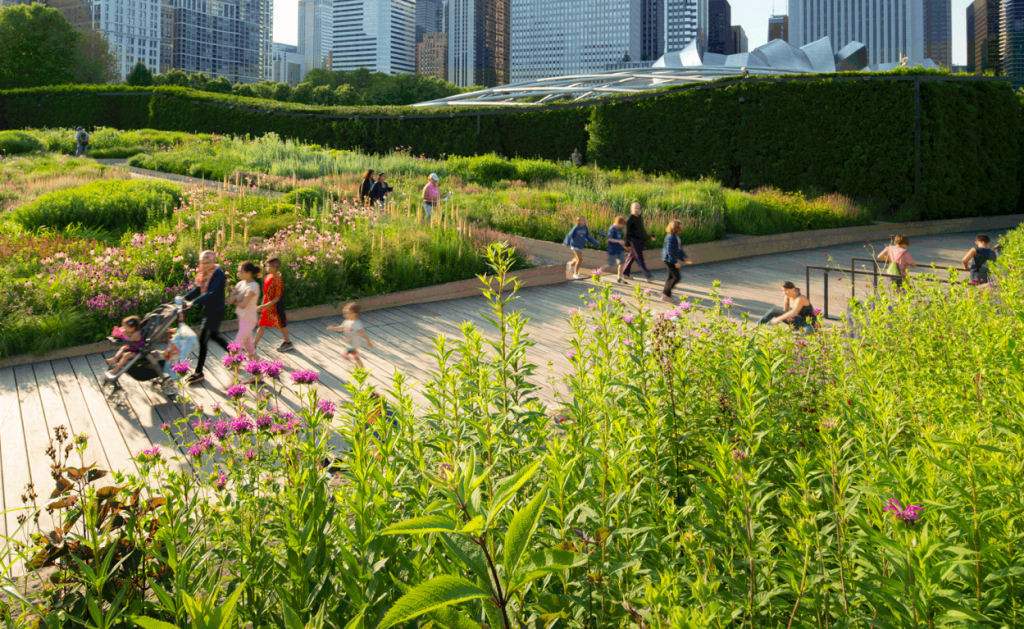
Recharge the Battery is thrilled to have GGN landscape architects as project partners, welcoming the “opportunity to explore options with professional firepower” brought by GGN’s design team.
At the same time, Asis has been also careful to emphasize the important role the Belltown community will play in determining the park’s future. “We want to stress that this whole thing came about of the spirit of Belltown,” Asis said “We have been making friends and looking at ways to make things better. Because we now have professionals and city on our side, we don’t want to turn our backs on what got us here.”
While many details about Battery Portal Park’s future design remain to be decided, some promising concepts have already arisen during Recharge the Battery’s community engagement sessions. Among these include ensuring the site has a community component such as a shared planting operation, maintaining the historic integrity of the site, and possibly building a Seattle Public Utilities demonstration site that would offer interpretative exhibits on stormwater collection in collaboration with Growing Vine Street, a Belltown neighborhood initiative which has worked toward transforming eight blocks of nearby Vine Street into an urban watershed and street park.
Those who have been keeping tabs on this story might be familiar with the fact the Battery Portal Site has been floated as a potential location for a future Downtown Seattle public school. While there are currently no plans to locate a public school at the site, the possibility has not been ruled out. In the meantime, outdoor classroom space is another design feature that is up for consideration in the future Battery Portal Park.
For now construction staging will continue dominate the Battery Portal Site
While Belltown residents have a future park to look forward to in 2022, for now the Battery Portal Site will continue to be filled with noise and commotion resulting from decommissioning of the former Battery Street Tunnel.
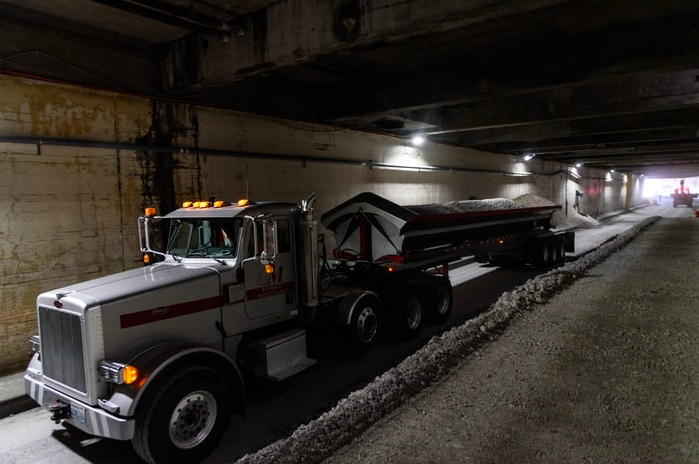
At this point most, if not all, of the rubble from the Alaskan Way Viaduct has been deposited into the tunnel. However, additional work such as removing the tunnel’s utility and mechanical systems and removing hazardous materials from the tunnel remain to be completed. The final step will be to fill the remainder of the tunnel with approximately 4,000 truck loads of low-density cellular concrete, which will be pumped into the tunnel through surface vents along Battery Street.
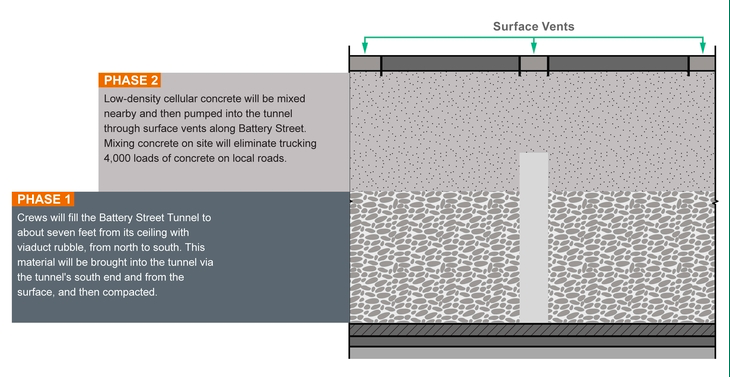
Once this work is completed, the land that occupies the site of the future Battery Portal Park will be returned from WSDOT’s ownership to the City of Seattle, honoring an easement agreement that was made decades ago and making way for a new, greener future for Belltown.
Natalie Bicknell Argerious (she/her) is a reporter and podcast host at The Urbanist. She previously served as managing editor. A passionate urban explorer since childhood, she loves learning how to make cities more inclusive, vibrant, and environmentally resilient. You can often find her wandering around Seattle's Central District and Capitol Hill with her dogs and cat. Email her at natalie [at] theurbanist [dot] org.

